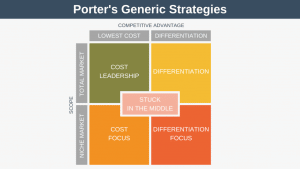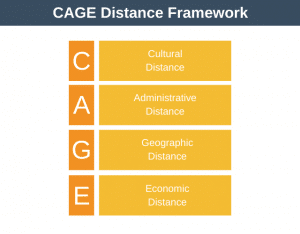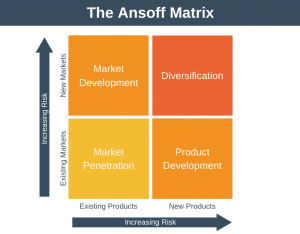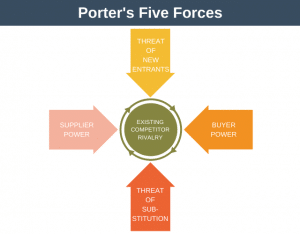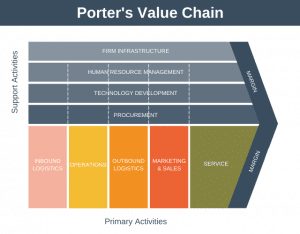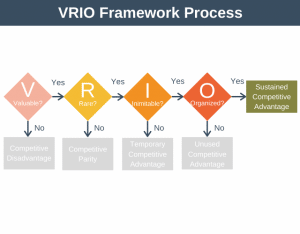To understand red ocean strategy let us begin by defining blue ocean strategy. Blue Ocean Strategy is where a company creates a completely new market space (or market category). This new market space is created by launching new offerings, with the aim being to make the competition irrelevant so that an organization can grow, uncontested, at least in the beginning.
You can think of a blue ocean being a place where the sailing is easy (uncontested with clear water) if you can successfully introduce an offering.
Blue Oceans can be thought of as markets that do not exist yet. The microwave oven would have been a blue ocean in the 1970s. Conversely, Red Oceans can be thought of as all the marketplaces which currently exist. So, whilst microwave ovens were definitely blue ocean in the 1970’s, today they are definitely a red ocean space.
If you’d like to learn more about blue ocean strategies, then the best book on the subject is probably Blue Ocean Strategy: How to Create Uncontested Market Space and Make the Competition Irrelevant.
As such, Red Oceans already contain a number of competitors. You can think of the color red being used in the term red ocean because of the bloodbath that a highly competitive marketplace can sometimes feel like. A Red Ocean Strategy is a strategy which aims to fight and beat the competition. Red Ocean Strategies have the following common characteristics:
- They focus on competing in a marketplace which already exists.
- They focus on beating the competition.
- They focus on the value/cost trade-off. The value/cost trade-off is the view that a company has the choice between creating more value for customers but at a higher cost, or reasonable value for customers at a lower cost. In contrast, those who attempt a blue ocean strategy aim to achieve differentiation and at the same time, low cost.
- They focus on exploiting existing demand.
- They focus on execution (better marketing, lower cost base etc).
A Red Ocean Strategy ultimately leads to an organization choosing to follow one of two strategies – differentiation or low cost. Whichever is chosen the organization must align all activities with one of these strategic directions.
A good example of Red Ocean Strategy is the European airline operator Ryanair (or Southwest if you like in the US). They are competing very successfully in the already saturated red ocean of the short-haul airline business. Their strategy is focused on providing a low-cost no-frills airline. It is able to achieve low costs through many methods including using secondary airports further away from a city than the main airport, allowing only online booking and check-in, and requiring customers to pay for all extras, amongst other methods. With Ryanair, the service isn’t great of differentiated in some way from other carriers, but it is cheap.
Blue Ocean vs. Red Ocean
The following table is useful in highlighting the different focus areas between a red ocean and blue ocean strategy:
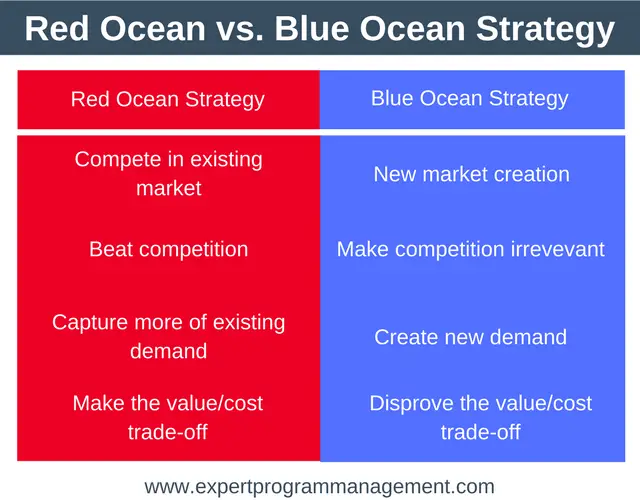
It is worth noting the organizations will move between blue oceans and red oceans over time. Successful trail-blazing organizations will attract competition, creating a red ocean. Within a red ocean where a bunch of competitors are fighting it out, eventually one of the companies will embrace innovation and change, creating a blue ocean and sustaining growth.
Which is Better? A Red Ocean or a Blue Ocean?
There are advantages and disadvantages to both a blue ocean and red ocean strategy. Let’s consider each in turn.
Red Ocean Strategy Advantages
- The market is already established.
- It is clear what products and services customers want.
Red Ocean Strategy Disadvantages
- There is usually an established market leader who will be very hard to beat.
- There is usually numerous niches trying to carve out market share in a subset of the total market.
- Competition is fierce.
Blue Ocean Strategy Advantages
- There can be a very high-profit margin in new markets.
- The successful creation of a blue ocean can create brand equity which could last for years or even decades.
Blue Ocean Strategy Disadvantages
- These markets are new and as such, there is the risk of completely misjudging the market and getting it wrong. This can be painful because creating a blue ocean typically requires a large investment.
- Blue oceans eventually become red oceans.
- There are very few success stories of companies who have successfully used blue ocean strategy.
- Because blue oceans are new, with no existing customer base, a lot of time needs to be spent educating customers as to the benefits of the category.
Example of Blue Ocean Strategy
Nintendo created a blue ocean when it launched the Wii. For years gaming companies had focussed on making better and better machines, Nintendo focussed my making the Wii fun. This created a blue ocean (as families bought the devices, not hardcore gamers) and lead to big margins for Nintendo as the Wii machines we cheaper to make than more advanced machines.
Example of Red Ocean Strategy
Think of any marketplace where competitors already exist, for example, look at all the marketing agencies in the world competing for business. This is a classic red ocean. The best agencies are able to carve out a niche for themselves by specializing in doing one thing really well.
A Final Consideration
One final point to consider is that the majority of the most successful companies on the planet didn’t create the ocean they operate in, for example, Google and Facebook were not first in their space but they now dominate. In fact, they dominate so much that it creates a huge barrier to entry for new enterprises. This can be summed up with the following phrase:
- Pioneers get wiped out while settlers prosper.
Applying this phrase to your own business could mean that you pay attention to new categories being created by your competitors, and then move into that space with conviction as soon as the category shows real signs of promise.


